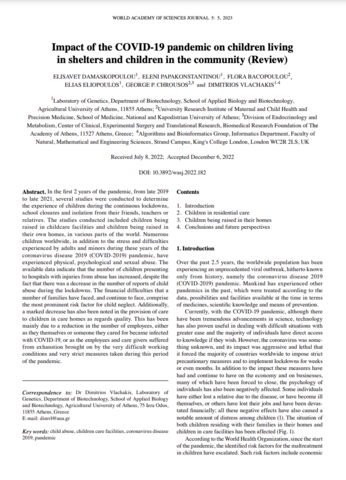This article reviews some of the latest global studies on the impact of the COVID-19 pandemic on children in residential care and children living with their families.
Abstract:
In the first 2 years of the pandemic, from late 2019 to late 2021, several studies were conducted to determine the experience of children during the continuous lockdowns, school closures and isolation from their friends, teachers or relatives.
The studies conducted included children being raised in childcare facilities and children being raised in their own homes, in various parts of the world. Numerous children worldwide, in addition to the stress and difficulties experienced by adults and minors during these years of the coronavirus disease 2019 (COVID-2019) pandemic, have experienced physical, psychological and sexual abuse.
The available data indicate that the number of children presenting to hospitals with injuries from abuse has increased, despite the fact that there was a decrease in the number of reports of child abuse during the lockdowns. The financial difficulties that a number of families have faced, and continue to face, comprise the most prominent risk factor for child neglect. Additionally, a marked decrease has also been noted in the provision of care to children in care homes as regards quality.
This has been mainly due to a reduction in the number of employees, either as they themselves or someone they cared for became infected with COVID-19, or as the employees and care givers suffered from exhaustion brought on by the very difficult working conditions and very strict measures taken during this period of the pandemic.

